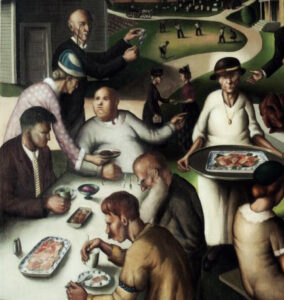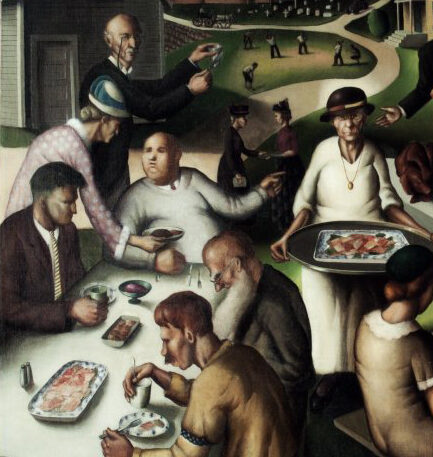Sample’s Church Super is his judgment of his wife Sylvia’s hometown in Westmore, Vermont. It’s dour and static.
The supper is ordinary, but many details tell otherwise. Though the minister calls the picnickers for grace, many are already eating. A very somber woman holds a tray, but no one is served from it. A sexy, fashionable woman is the object of attention as she lifts her skirt to show her leg. A fat man seated at the table, being served by a woman, points in the direction of the blond, or is he pointing at the dowdy older woman holding a tray of food?

Sample’s colors are somber, greens, browns, tans, and creamy whites. The food is not a primary factor here. Sample’s emphasis on social interactions mitigates the religious and spiritual aspects of the meal. It seems a critique of petty materialism. Only the children playing deep in the background have a sense of joy, perhaps because they do not know any better.
Featured Image: Look carefully to see if anyone smiles, even remotely. Paul Sample. Church Supper (1933), oil on canvas. Springfield, Massachusetts: Museum of Fine Arts:
See Robert L. McGrath and Paula F. Glick. Paul Sample: Painter of the American Scene. Dartmouth: Hood Museum of Art, 1988; Other church suppers by Edna Lewis, William Clary, Paul Sample, and Marion Post Wolcott.

